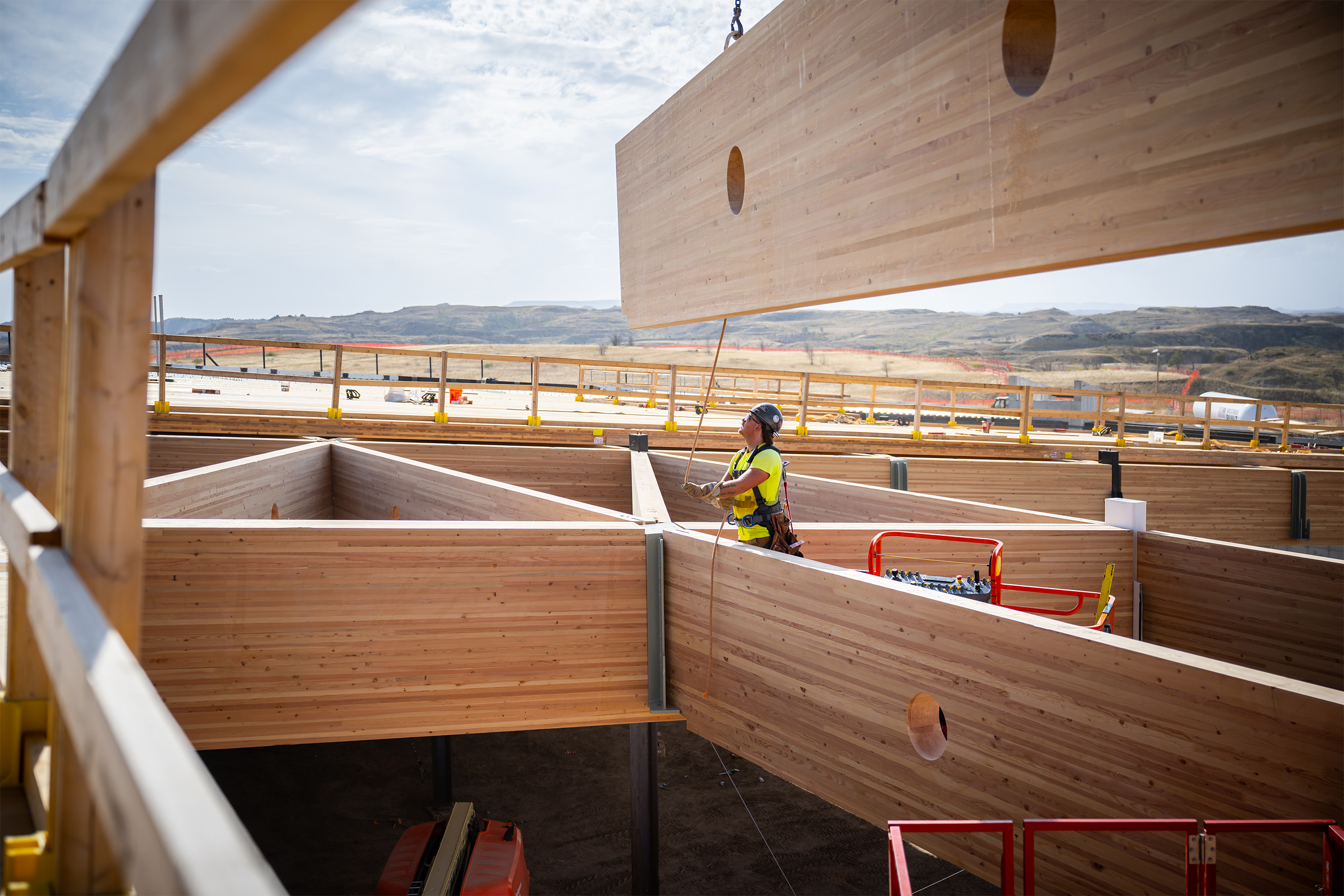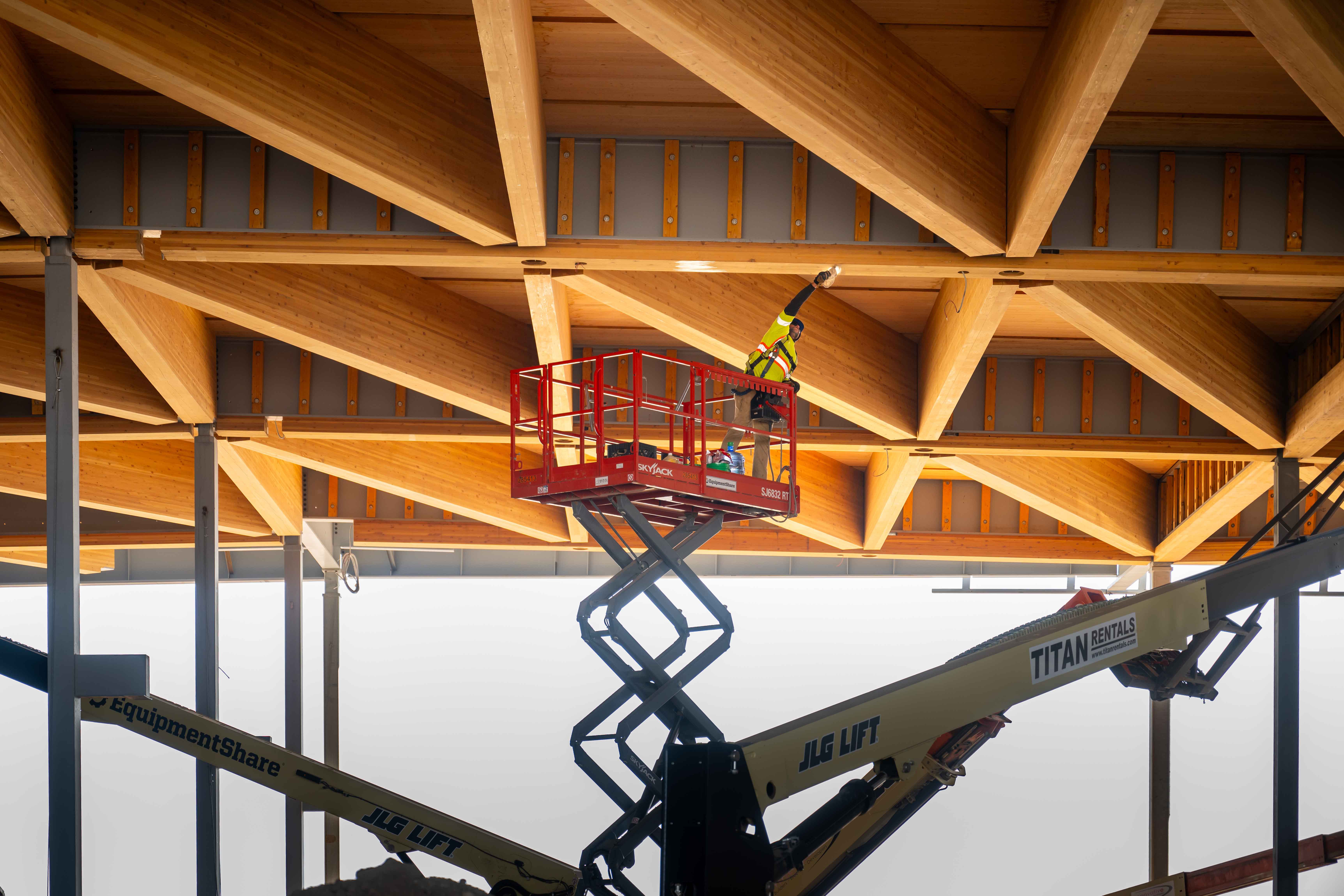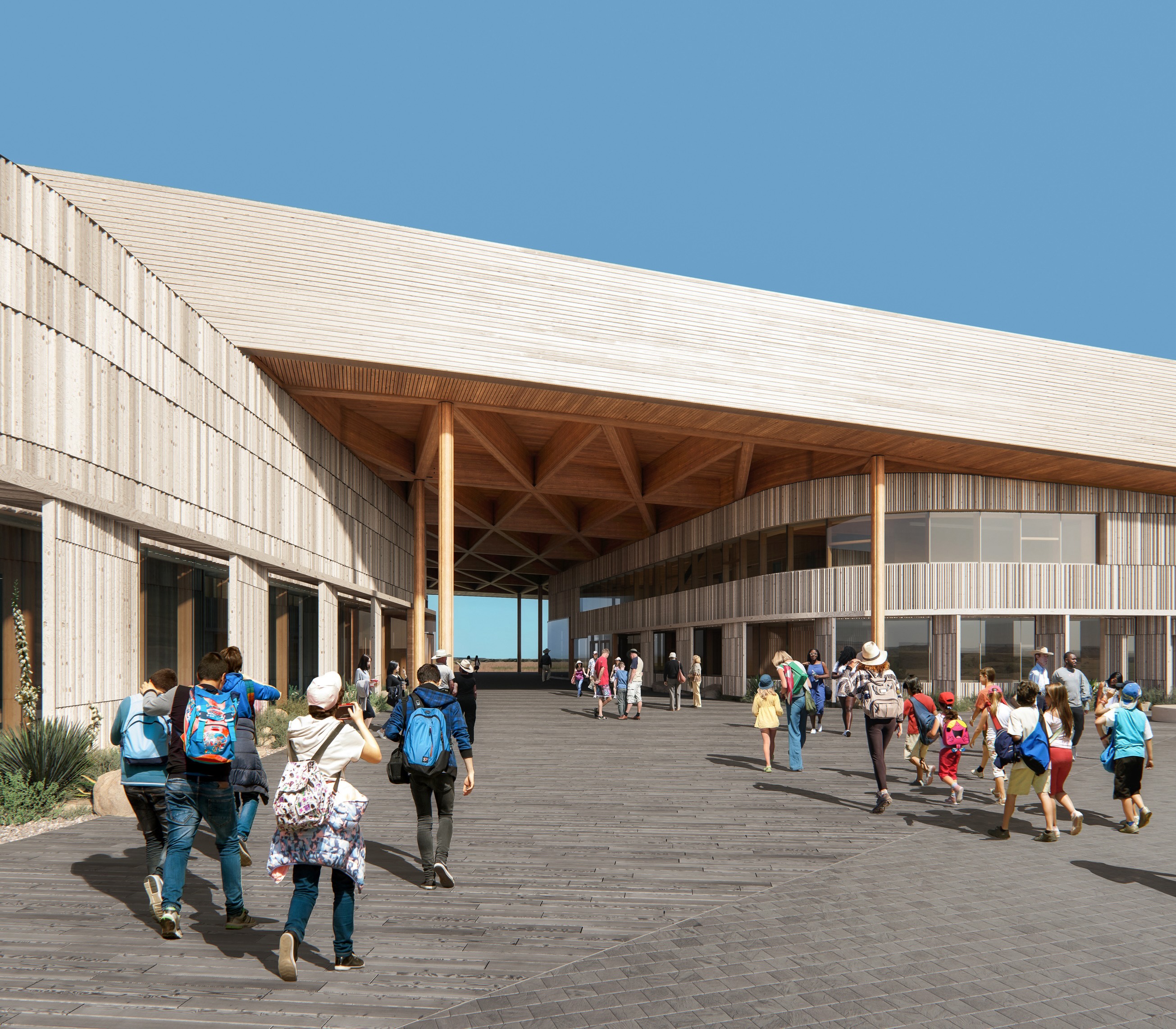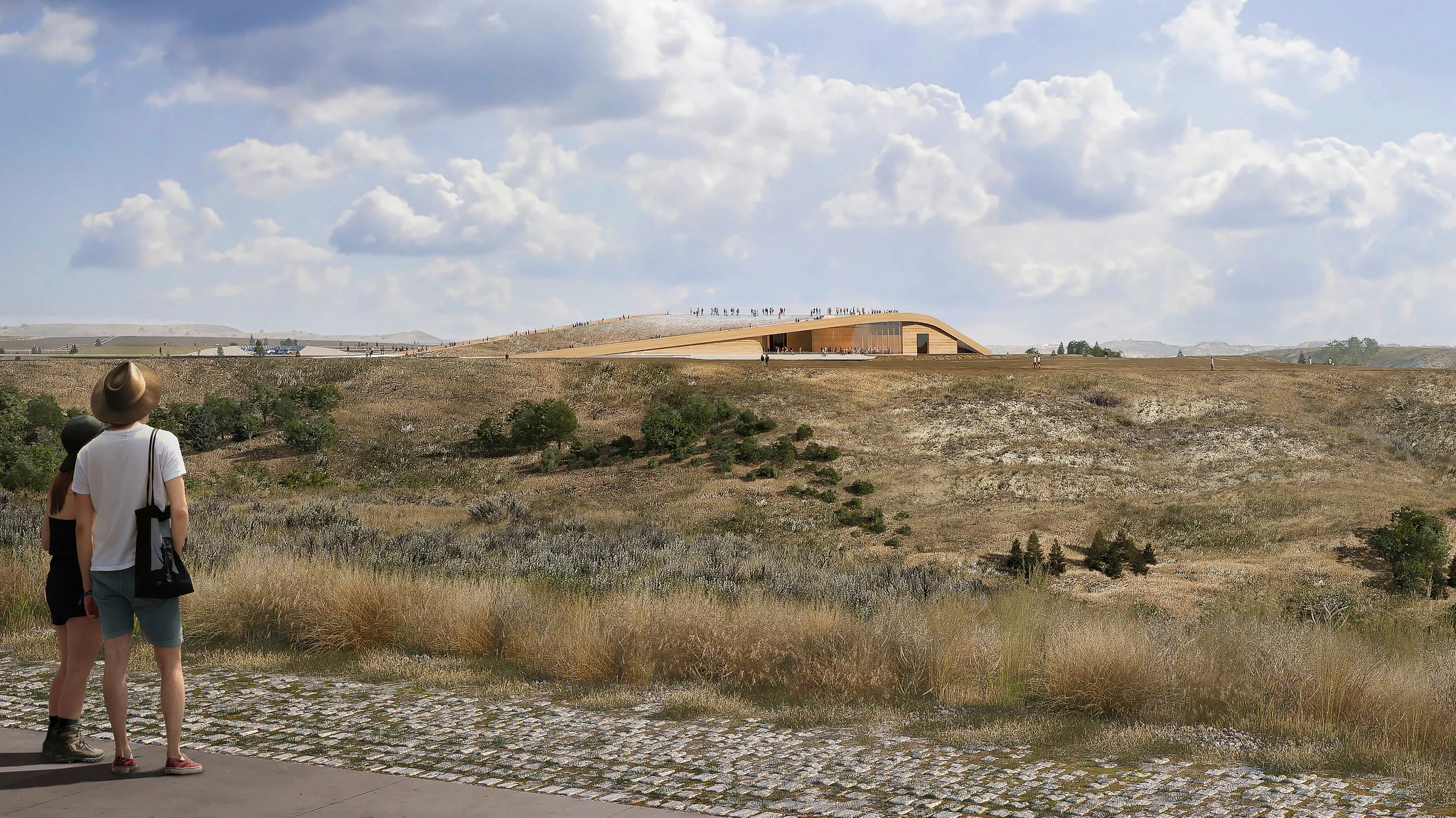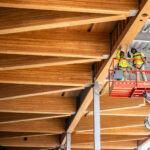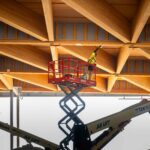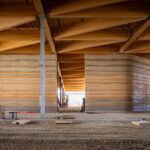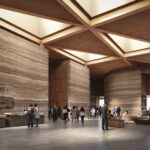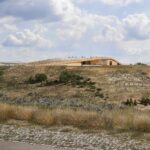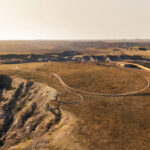Theodore Roosevelt first arrived in the North Dakota Badlands in September 1883. Over a century later, construction is underway for the presidential library that bears his name. Situated on 93 acres in Medora, North Dakota, the Theodore Roosevelt Presidential Library (TRPL) overlooks a stunning expanse of canyons and buttes, honoring the 26th president of the United States – known for his love for nature and preservation.
The library will be a single-story, large footprint museum building with 93,000-square-feet of interior space that includes interactive galleries, community spaces, a café, and an auditorium.
The roof structure features glulam beams arranged in a triangular pattern that follows the curvature of the roof. Exposed cross-laminated timber (CLT) panels form the ceiling, providing structural support for a landscaped roof over a concrete topping. The curved design required intricate glulam connection details at the beam intersections. To achieve precise connections, our team employed parametric modeling to meet the bi-angular requirements at each location. These connections utilized concealed steel hangers embedded within the glulam members’ ends. Additionally, the glulam beams rest on steel columns and girders, which are wrapped in glulam for a consistent all-wood appearance.
The Theodore Roosevelt Presidential Library goes beyond a traditional museum. Visitors will embark on a journey through a preserved natural landscape, dotted with pavilions for reflection and activity. Its location supports ongoing conservation research and offers a haven for educational walks, leisure, and recreation. Continued cultivation will transform the site into a living laboratory and repository for the unique flora of the Badlands.
In partnership with general contractor JE Dunn, MMT is providing mass timber design-assist services, material supply, and coordination and logistics for the project, including the signature roof structure.
MMT will supply nearly 1,800 m3 of CLT and glulam across the project. The sustainable wood will be used for the library’s structure, including the roof structure in Phase One. Phase Two will incorporate CLT and glulam in exterior features like a footbridge and canopies sheltering photovoltaic arrays. This project is targeting LEED Platinum and Living Building Challenge certification.
